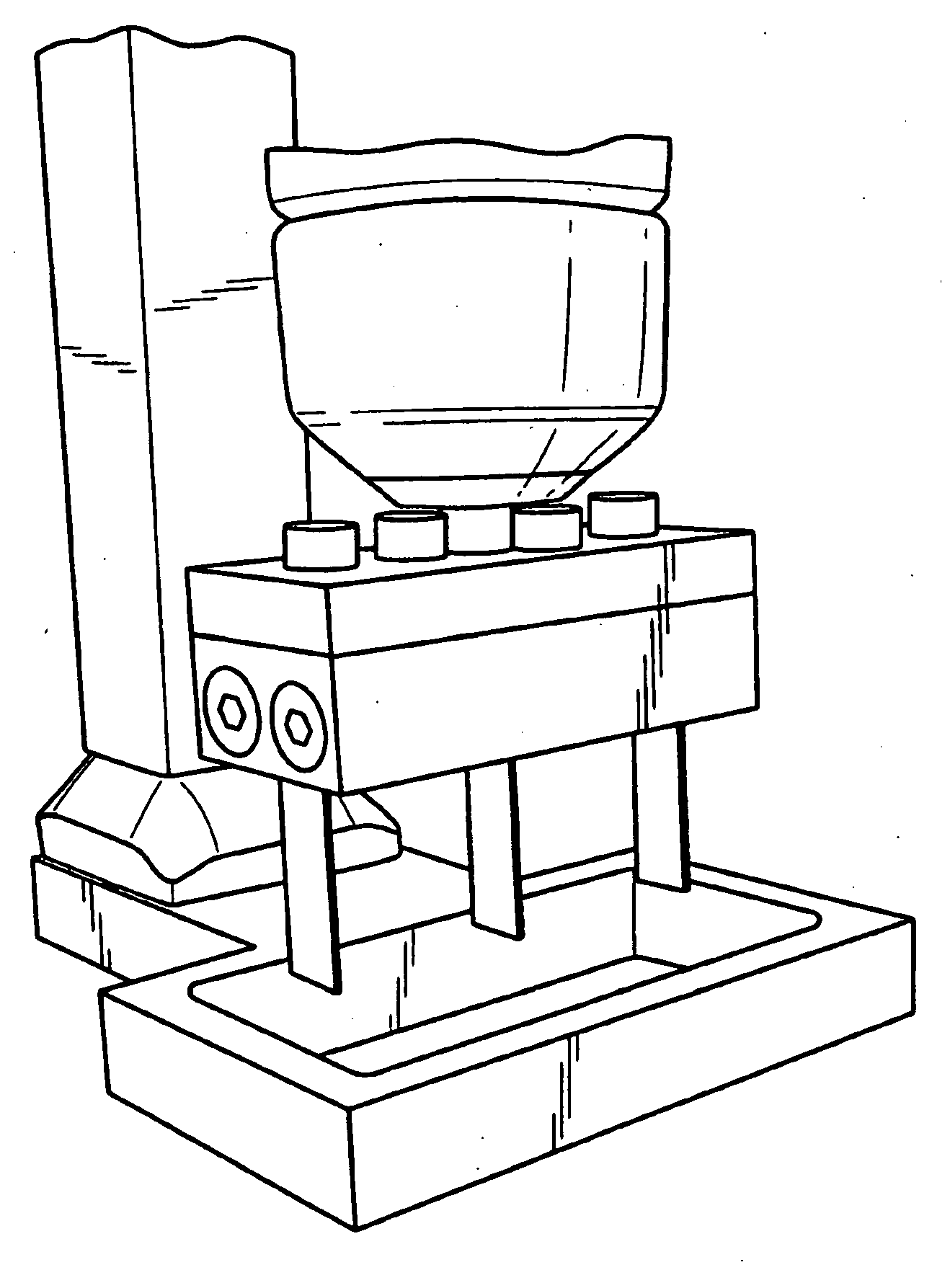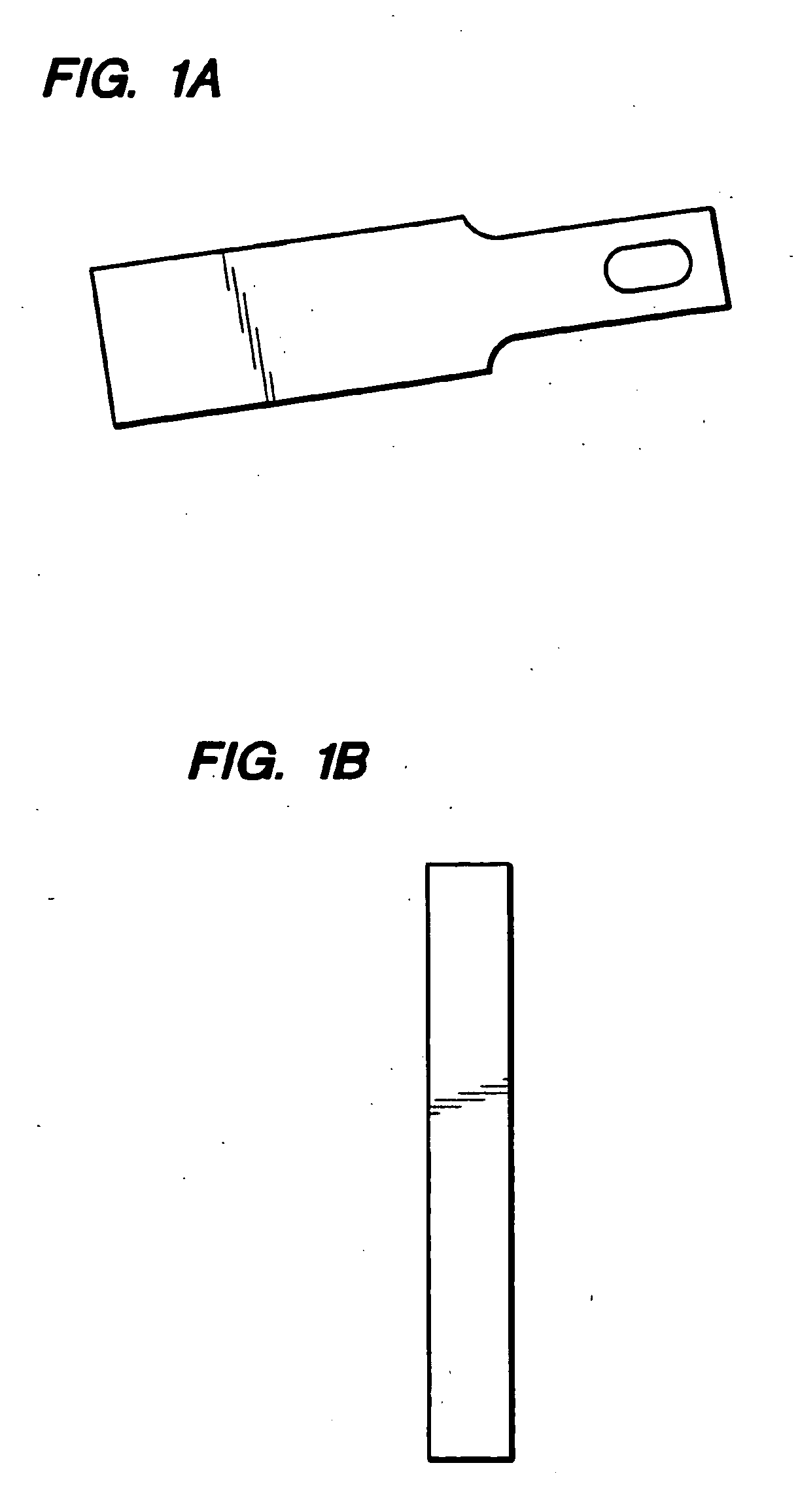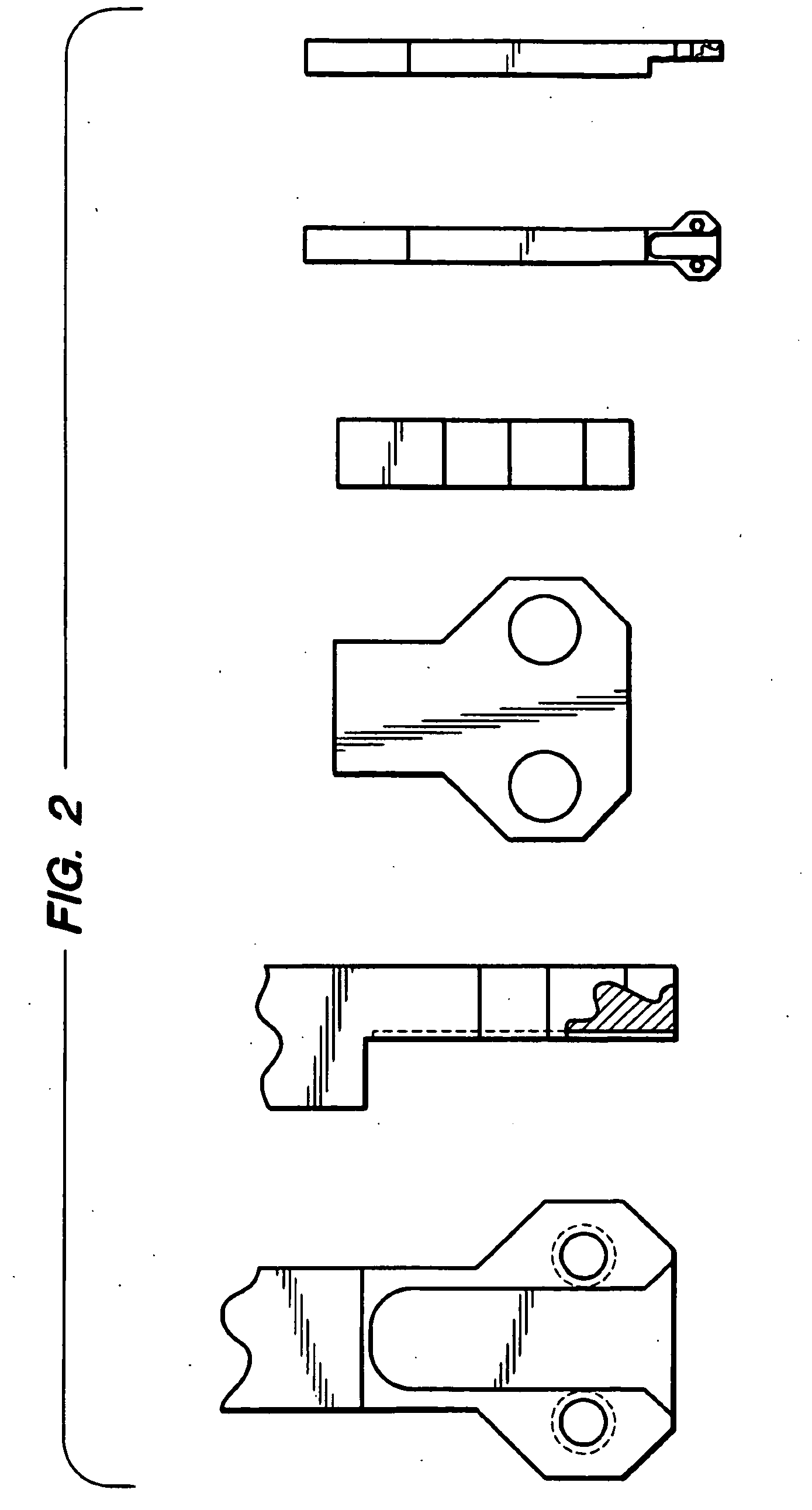Apparatus and Method for Predicting Meat Tenderness
a technology of meat tenderness and apparatus, applied in the field of methods and devices for predicting the tenderness of a selection of meat, can solve the problems of inability to consistently detect the tenderness differences of steaks derived from a large number of carcasses, the lack of accuracy and repeatability of the device, and the failure of the prior art device to achieve the effect of achieving rapid and efficient performance and greater return on meat products
- Summary
- Abstract
- Description
- Claims
- Application Information
AI Technical Summary
Benefits of technology
Problems solved by technology
Method used
Image
Examples
Embodiment Construction
[0031]With reference to FIGS. 1-3, a first preferred embodiment of the present invention is described. The device comprises a blunt, flat-tipped razor blade or blades as shown in FIGS. 1A and 1B.
[0032]As seen in FIG. 1B, the device further comprises a blunt blade with a flat tip. A sharpened blade does not provide sufficient resolution to distinguish between tougher and more tender meats when presented with respect to raw meat, particularly raw meat integral to the meat carcass. Other blade configurations, such as the half-round blade configuration of the Shackleford method described above, are believed to push between fibers within the meat rather than shear through them, thereby making such blade configurations less desirable.
[0033]Sharpened blades, while potentially appropriate for more tender meat, are believed to not provide a sufficiently discriminative measure of shear force in tougher grades of meats. In addition, it is difficult to precisely define the sharpness of a sharpe...
PUM
 Login to View More
Login to View More Abstract
Description
Claims
Application Information
 Login to View More
Login to View More - R&D
- Intellectual Property
- Life Sciences
- Materials
- Tech Scout
- Unparalleled Data Quality
- Higher Quality Content
- 60% Fewer Hallucinations
Browse by: Latest US Patents, China's latest patents, Technical Efficacy Thesaurus, Application Domain, Technology Topic, Popular Technical Reports.
© 2025 PatSnap. All rights reserved.Legal|Privacy policy|Modern Slavery Act Transparency Statement|Sitemap|About US| Contact US: help@patsnap.com



